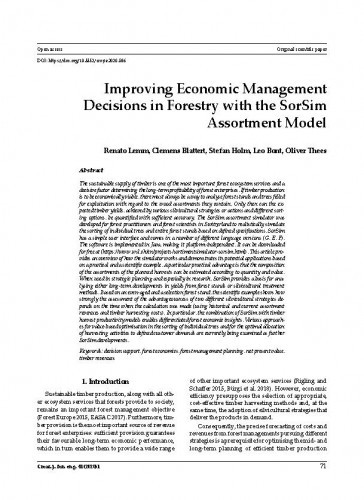The sustainable supply of timber is one of the most important forest ecosystem services and a decisive factor determining the long-term profitability of forest enterprises. If timber production is to be economically viable, there must always be a way to analyse forest stands and trees felled for exploitation with regard to the wood assortments they contain. Only then can the expected timber yields, achieved by various silvicultural strategies or actions and different sorting options, be quantified with sufficient accuracy. The SorSim assortment simulator was developed for forest practitioners and forest scientists in Switzerland to realistically simulate the sorting of individual trees and entire forest stands based on defined specifications. SorSim has a simple user interface and comes in a number of different language versions (G, E, F). The software is implemented in Java, making it platform-independent. It can be downloaded for free at (https://www.wsl.ch/en/projects/sortimentsimulator-sorsim.html). This article provides an overview of how the simulator works and demonstrates its potential applications based on a practical and a scientific example. A particular practical advantage is that the composition of the assortments of the planned harvests can be estimated according to quantity and value. When used in strategic planning and especially in research, SorSim provides a basis for analysing either long-term developments in yields from forest stands or silvicultural treatment methods. Based on an even-aged and a selection forest stand, the scientific example shows how strongly the assessment of the advantageousness of two different silvicultural strategies depends on the time when the calculation was made (using historical and current assortment revenues and timber harvesting costs). In particular, the combination of SorSim with timber harvest productivity models enables differentiated forest economic insights.
Sažetak

 Croatian journal of forest engineering : 41,1 (2020) : journal for theory and application of forestry engineering / editor-in-chief, glavni urednik Tibor Pentek, Tomislav Poršinsky.
Croatian journal of forest engineering : 41,1 (2020) : journal for theory and application of forestry engineering / editor-in-chief, glavni urednik Tibor Pentek, Tomislav Poršinsky.